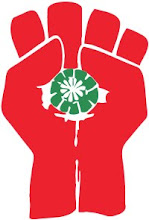There are some excellent Arts resources online, but all have different strengths or weaknesses. Here are some of the Exhibitions listings sites I find myself returning to, but I'm always happy to hear if you have any other suggestions:
First up, New Exhibitions is an good resource for simple listings although it is no frills and much more useful in its free regular printed ‘map’ format.
As a more comprehensive resource, ArtRabbit is my current favorite. It holds informative gallery pages and archives, is inclusive and has a great mapping feature identifying other galleries or venues in proximity to your chosen show - so you can easily plan a series of visits around an area.
For a more dynamic experience, you could join Art Calendar. Here, you can maintain a personal calendar, which is updated with listings that you can mark your attendance at. This is attached to the Art Review Magazine Social Network, so to use it you will have to join first. That's not such a bad thing as you have access to many informative and well written reviews and articles - but it is a little over-loaded, difficult to navigate and clunky and slow at times. It is still at the BETA testing stage, so maybe wait until it's fully launched. In the mean time, the less interactive but smoother and equally informative ArtSlant is a better choice.
Of those more general ‘What’s On’ sites that include Exhibitions as a category - Spoonfed is a pretty good general guide and is fairly comprehensive, although difficult to search in any detail beyond ‘Exhibition’. A better bet is Time Out Online, which has a more powerful search engine and a more active feedback community. Time Out’s brand popularity, however, means they are subject to a barrage of submissions and – as a forgivable result – they often limit the scope of their entries to the firmly established venues. They do list fringe exhibitions and events, but their selections are often quite random and erratic. I also quite like View London – it lacks the editorial content of Time Out, but has a very broad scope of entries and a clear streamlined and easy to navigate platform.
Feel free to send me some more suggestions and I’ll happily expand this list. Next time, I’m going to suggest some of the blogs I’ve been enjoying…

